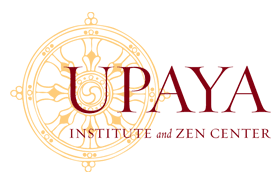[Princeton]- APS-A loved one loses a parent to cancer; on television, a football player breaks his leg in a tackle; in the newspaper, a mother on the other side of the world cradles the body of her injured child. How do people react when others are in distress? Much of the time, we feel pain or sadness in response to another’s suffering. A key component of this response is the suite of cognitive and affective capacities called empathy (Batson, 2009): people recognize emotional experiences in others, experience matched sensations and emotions, and are motivated to alleviate those others’ suffering, frequently resulting in helping behaviors.
Often, though, we are likely to feel no pain, no sadness, and no motivation to help. Failures of empathy are especially likely if a sufferer is socially distant—for example, a member of a different social or cultural group. We often fail to detect such outgroup members’ emotional experiences or perceive them in substantially distorted ways, and we are only weakly, if at all, motivated to reduce their suffering. In fact, depending on the victim, we may feel secretly pleased about his or her misfortunes. To examine failures of empathy at the intergroup level is particularly important, because intergroup conflicts engender significantly more aggression than do interpersonal interactions (Meier & Hinsz, 2004). Although interpersonal morality prohibits people from harming others, engaging in violence on behalf of the ingroup is accepted in times of group conflict (Cohen, Montoya, & Insko, 2006). Dampened or absent empathic responses may lead to indifference toward outgroup suffering and may even facilitate further harm against outgrips.
Here we take an interdisciplinary look at intergroup empathic failures—including affective, behavioral, physiological, and neural data. We incorporate recent investigations of the neurobiological mechanisms of dampened and disrupted empathy, because these mechanisms are both a proximate cause of pro- and antisocial behaviors and a potential future target of interventions. In the second section, we consider potential negative alternatives to empathy (i.e., schadenfreude) in the context of intergroup competition. Because feeling pleasure in response to others’ pain is often socially unacceptable, people may feel uncomfortable or be unable to respond naturally in experimental settings. Using indirect measures such as facial electromyography and functional magnetic resonance imaging (fMRI) helps to circumvent some of the hurdles associated with measuring socially undesirable emotions and behaviors.
Finally, we discuss some of the recent literature on intergroup- conflict interventions that aim to increase intergroup empathy. While increased empathy can facilitate positive attitudes and prosocial behavior toward outgroups, there are circumstances in which empathy can backfire—making it important to understand when and why intergroup empathy breaks down.
Dampened and Disrupted Empathy for Outgroups
Empathy is generally recognized as a central component of the human condition; because it promotes prosocial behavior, it is an essential aspect of human social life. Beginning in infancy, people are affected by others’ suffering: They ‘‘step into the other person’s shoes,’’ ‘‘feel their pain,’’ and are motivated to help (Batson, 2009). One popular theory suggests that (in the absence of pathology) empathic responses arise out of an automatic, universal mechanism in the human brain that detects another person’s experience and activates a matching experience in the observer (Preston & de Waal, 2002). In this view, shared neural circuits provide a direct functional bridge between first- and second-person experiences (Decety & Ickes, 2009). Seeing another human being in pain, observers feel that other’s pain.
We know, however, that adults with normal empathic capacity also frequently fail to respond to another’s suffering. This may be because people are less likely to detect and attend to another’s suffering when the victim is distant in space, time, or kinship or belongs to a different racial, political, or social group (Batson & Ahmad, 2009). Empathy is even fragile between minimal groups—groups in which the boundary is arbitrary—such that children randomly assigned to groups (e.g., the ‘‘red team’’ or the ‘‘blue team’’) show greater empathy for ingroup members than for outgroup members who are socially rejected (Masten, Gillen-O’Neel, & Brown, 2010).
Recent studies are beginning to unpack the physiological and neural underpinnings of these empathic failures. In general, people show dampened or even absent ‘‘matching’’ neural and physiological responses when witnessing an outgroup member in physical pain. For example, Black and White participants show ‘‘empathic resonance’’ (i.e., sensorimotor contagion, indexed by modulation of motor evoked potentials in matched hand muscles) when watching an ingroup member’s hand (or even an artificially colored, purple hand) being pricked by a pin, but this response is absent when the hand belongs to an outgroup member. Reduced empathic resonance in response to outgroup pain is correlated with higher implicit racial bias (Avenanti, Sirigu, & Aglioti, 2010). Similarly, in White and Asian participants, the shared neural circuit for pain—anterior cingulate cortex (ACC), supplementary motor area (SMA), and insula—is more active when viewing same-race as compared to other-race faces being pricked with a needle (Xu, Zuo, Wang, & Han, 2009).
Future research should extend these paradigms beyond racially defined groups to arbitrary minimal groups (e.g., Masten et al., 2010) and distinguish ‘‘extraordinary’’ empathy for the ingroup from failures of empathy for the outgroup (e.g., Mathur, Harada, Lipke, & Chiao, 2010). Another target variable for future research is asymmetry in power or minority status between groups. Historic differences in power and status are likely to affect the source of intergroup dampening of empathy. For example, Black and White American participants show ‘‘matching’’ responses to pain in White and Black targets (in the ACC and insula), but only Black participants show addi- tional activity in medial prefrontal cortex (mPFC) in response to ingroup suffering (Mathur et al., 2010). Black American participants’ empathy for Black individuals’ suffering is likely affected by their minority status.
Thus, outgroup members—merely by virtue of who they are and not anything they have done—reliably elicit diminished perceptions of suffering and fail to elicit equivalent physiological and affective empathic responses. More concerning is that these dampened empathic responses are related to less helping. For example, people who attributed fewer uniquely human emotions (e.g., anguish, mourning) to opposite-race Hurricane Katrina victims were also less willing to volunteer for relief efforts to help those victims (Cuddy, Rock, & Norton, 2007). In contrast, greater mPFC activity in response to in-group suffering predicts participants’ willingness to donate time and money to help ingroup members (Mathur et al., 2010).
Competition and Schadenfreude
Social identity—‘‘us’’ and ‘‘them’’—is most salient when groups are set in direct competition. Not surprisingly, inter- group competition strongly modulates empathic responding: Distressed ingroup members typically elicit empathy (Batson & Ahmad, 2009), whereas competitive rivals’ pain may even elicit pleasure, sometimes referred to as schadenfreude (Smith, Powell, Combs, & Schurtz, 2009). For male participants, brain regions associated with experiencing ‘‘reward’’ (i.e., left ventral striatum including nucleus accumbens) show positive activation when a competitor receives a painful electric shock (Singer et al., 2006). Both male and female participants exhibit reward-related activation (i.e., bilateral ventral striatum) when a socially competitive target experiences misfortunes (e.g., has rumors spread about him or her; Takahashi et al., 2009). Thus these reward-related regions respond to competitors’ physical and emotional suffering.
Similar effects occur when the sufferer is not a direct competitor but a member of a competitive group. Competitive outgroups may become targets of schadenfreude following failures in intergroup competition, particularly if participants are reminded of their own group’s inferiority prior to the outgroup’s failure (Leach & Spears, 2009). In the context of a real-world sports rivalry, Red Sox and Yankees fans reported feeling pleasure and showed activity in reward-related brain regions (i.e., right ventral striatum including nucleus accumbens) when they watch their rival fail to score against their favored team and also against a less competitive team in the same league (i.e., the Orioles). Attaching positive value to outgroup members’ suffering may provide motivation for inflicting suffering: People who show more reward-related activity when watching the rival team fail also report being more likely to actively harm the rival team’s fans (Cikara, Botvinick, & Fiske, 2011). These findings extend to situations in which the rival fans themselves are in physical pain: Soccer fans exhibited reward-related activity (again, in the right ventral striatum) when watching a rival team’s fan receive a painful electric shock; the magnitude of this activity predicted participants’ later unwillingness to relieve the rival’s pain by receiving half of the electric shock themselves (Hein, Silani, Preuschoff, Batson, & Singer, 2010).
Competitive groups may also become targets of schaden- freude simply by virtue of the stereotypes associated with their group. While people report feeling neutral watching a high- status, competitive stranger (e.g., an investment banker) sit in gum on a park bench, they also smile (i.e., cheek muscle engagement, measured by facial electromyography), indicating the presence of positive affect (i.e., schadenfreude), not just the absence of negative affect (i.e., feeling neutral; Cikara & Fiske, 2011). On a positive note, manipulating status and competition-relevant information can attenuate this reaction: People exhibit a more empathic response when the unfortunate target is perceived as having lower status or as being cooperative (Cikara & Fiske, 2011).
Schadenfreude is thus a powerful and common alternative to empathy, offering positive emotions and self-affirmation in the face of a competitive threat (Leach & Spears, 2009). The lure of schadenfreude can even overpower self-interest: People feel pleasure at rivals’ misfortunes, even when the misfortunes have negative implications for themselves and society more broadly. For example, Democrats, especially those who strongly identified with their political party, reported considerable scha- denfreude after reading an article describing a mild economic downturn that occurred during a Republican administration (Combs, Powell, Schurtz, & Smith, 2009). Schadenfreude may function as a signal of ingroup cohesion in opposition to competitors. Demonstrating pleasure instead of empathy in response to someone’s misfortune is a clear sign to both ingroup and outgroup members that one’s interests are not aligned with those of the victim (Leach & Spears, 2009).
People with the most empathy for members of their ingroup may thus experience the most schadenfreude toward a threatening outgroup. When an outgroup is perceived as antagonistic, people respond less empathically to outgroup members but also more empathically to ingroup members (Dovidio et al., 2010; see, however, Xu et al., 2009 for a positive correlation between ingroup and outgroup empathic resonance). Agent-based simulations suggest that the motivation to help ingroup members and hostility toward people from other ethnic or racial groups may have co-evolved in humans: Group survival is more likely when many members are willing to fight in intergroup wars and even sacrifice themselves to protect others in their group (Choi & Bowles, 2007). The most dramatic incidents of intergroup violence are consistent with these suggestions: Most suicide bombers are not psychopaths but rather may experience particularly high empathy selectively for their own group’s suffering (Ginges & Atran, 2009).
Interventions
Social distance and group boundaries reduce people’s motiva- tion to alleviate victims’ suffering. Conflict-resolution and prejudice-reduction programs aim to turn this situation around using several procedures to increase empathy: perspective- taking, role playing, simulation, and positive intergroup contact. The general hypothesis of these programs is that increasing empathy for specific outgroup members can increase tolerance and willingness to help (and decrease willingness to harm) other outgroup members (Batson & Ahmad, 2009). For example, in an impressive large-scale field study, a radio drama in Rwanda depicting positive intergroup interac- tions increased empathy of Hutus toward Tutsis (Paluck, 2009). In some cases, positive effects of intergroup contact can occur rapidly: An online video-based interaction between Israelis and Palestinians temporarily increased positive attitudes and empathy toward the outgroup, even after only 20 minutes (Bruneau & Saxe, 2011). In some cases, the positive effects of interaction can be long-lasting: Relative to control groups, Sri Lankan Singhalese participants in a 4-day intergroup workshop expressed enhanced empathy toward Tamils even a year after participating in the program (Malhotra & Liyanage, 2005). Increased empathy can in turn lead to improved attitudes toward and willingness to help outgroups (Batson & Ahmad, 2009). For example, increasing empathy increased donations to an out- group charity (Malhotra & Liyanage, 2005) and forgiveness for past atrocities (Cehajic, Brown, & Castano, 2008).
While success is possible, interventions are not always beneficial: Empathy, positive attitudes, and helpful intentions toward an outgroup can also decrease following perspective taking. For example, metastereotypes—thoughts about how one (as a majority group member) may be evaluated by an out- group member—are activated when individuals empathize with an outgroup member in the context of an intergroup inter- action. These thoughts have the deleterious effect of interrupting other-focused empathic responses that are required for prejudice reduction. Moreover, among relatively high- prejudice participants, empathy induction can elicit overtly negative reactions to a nearby outgroup member (Vorauer & Sasaki, 2009).
A key variable, again, is the historical asymmetries of status and power between groups. For example, intergroup interventions have asymmetric effects for majority/empowered and minority/disempowered group members when the interventions are based on intergroup contact (Pettigrew & Tropp, 2006), when they involve focused assimilation versus integration (Dovidio et al., 2005), and when they require perspective taking versus ‘‘perspective giving’’ (speaking and being heard by a member of the other group; Bruneau & Saxe, 2011).
Understanding the causes and contexts of intergroup interventions is critical. Unfortunately, well-controlled empirical studies of prejudice-reduction and conflict-resolution programs remain rare, and relevant data are scarce (Paluck & Green, 2009). Since well-intended programs sometimes have no effect or even negative effects, it is particularly important that empirical evaluations of these programs match the pace of their creation.
Conclusion
People often empathize and feel emotional pain in response to the misfortunes of others. Empathy is, however, a highly flexible, context-dependent response. If an individual is a member of an outgroup, they are more likely to fail to arouse our empathy and could even be targets of schadenfreude in competitive contexts. Failures of empathy matter because they are related to diminished helping responses. While people are capable of incredible feats of cooperation and empathy, they are also capable of callousness, finding pleasure in others’ pain; better understanding the social, cognitive, and neural mechanisms underlying empathy and schadenfreude may help to alleviate humanity’s deepest tragedies and facilitate its greatest triumphs.
















 Self-confessed neurogeek Kerri Smith joined
Self-confessed neurogeek Kerri Smith joined 



